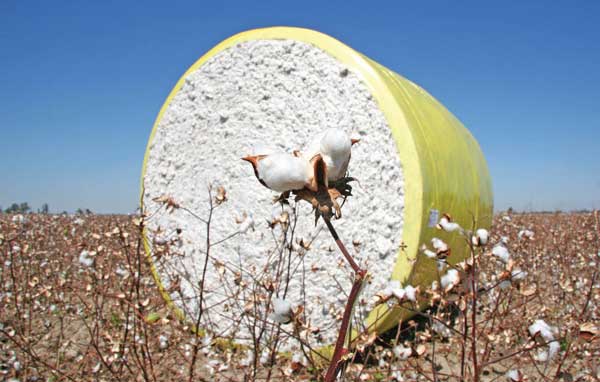
The latest boll weevil eradication deadline for stalk destruction in the Upper Coastal Bend zones are the latest extension to join a growing list of areas affected by weather related harvest delays.
Dr. Robert Crocker, Program Specialist for Pest Management and Citrus Programs at the Texas Department of Agriculture, sent out the official notice Oct. 14 indicating stalk destruction extension requests for Zone 3, areas 1-3 have been approved and the effective new deadline stands at Oct. 29, 2013.
The original destruction deadlines for Zone 3, Area 1 (3.1) was Oct.1, but an extension was granted Sept. 19 pushing that deadline to Oct. 15. The latest extension deadline provides for a new cut-off date of Oct. 29. For Zone 3, Areas 2 and 3 (3.2 and 3.3), the original Oct. 15 and Oct. 20 deadlines respectively have both been delayed until Oct. 29.
Local crop officials requested the delays as a result of what they term late planted cotton, a cool spring and abundant September and October rains, which continue to fall in many coastal areas. The counties where the zone areas are located include Jackson, Wharton and Matagorda (3.1), Austin, Fort Bend and Brazoria Counties (3.2) and Harris, Galveston, Chambers, Liberty Jefferson and Orange Counties (3.3). Crocker said there is only negligible risk in granting the requests.
San Patricio County Extension crop specialist Bobby McCool reported Sept. 12 that the TDA granted the blanket extension of the destruction deadline to Oct. 1 for Pest Management Zone 2, Area 3, which includes Aransas County except for that part north of Copano Bay, including but not limited to Lamar and Blackjack peninsulas, and San Patricio County south, and east of U.S. Highway 59 in Bee and Live Oak counties, but those deadlines have now expired.
If you are enjoying reading this article, please check out Southwest Farm Press Daily and receive the latest news right to your inbox.
The area continued to receive substantial rain over the last week as a result of extensive Gulf and Pacific moisture fueled by more tropical weather systems. Over the last 60 days, the National Weather Service's Advanced Hydrologic Prediction Center indicates that heavy rainfall amounts ranging between fro 10 inches to 20 to inches have fallen across broad areas of the Houston and Galveston areas and the Upper Coastal Bend zones have received varying rainfall amounts of 4 inches to 16 inches of rain over the last 60 days.
While cotton crop development has been slow in adjacent areas and especially north stretching into Zone 3 (Areas 1, 2 and 3), officials say deadline extensions were necessary until all cotton can be harvested, a task still underway in some areas of the affected zones. Because of late planting and continued rain in recent weeks, Crocker warned that these additional deadlines may become necessary.
In 2012, TDA announcement stalk destruction extensions for Zone 3 for many of the same reasons. According to Texas Boll Weevil Eradication Foundation (TBWEF) guidelines, an extension may be requested for mitigating circumstances such as crop and subsequent harvest delays.
While most areas of the state are boll weevil free, a quarantine zone along the Texas Mexico border in the Rio Grande Valley remains in effect and stalk destruction programs are still required in an effort to maintain safeguards against re-infestation.
USDA officials are also working with their counterparts in Mexico to bring about further eradication of the pest in North America.
Eradication officials say that cotton producers in coastal areas who can not meet their respective destruction deadlines can request an individual extension by visiting the Texas Department of Agriculture Web site.
More from Southwest Farm Press:
Is South Texas buffer zone needed to prevent boll weevil reinfestation…
About the Author(s)
You May Also Like




